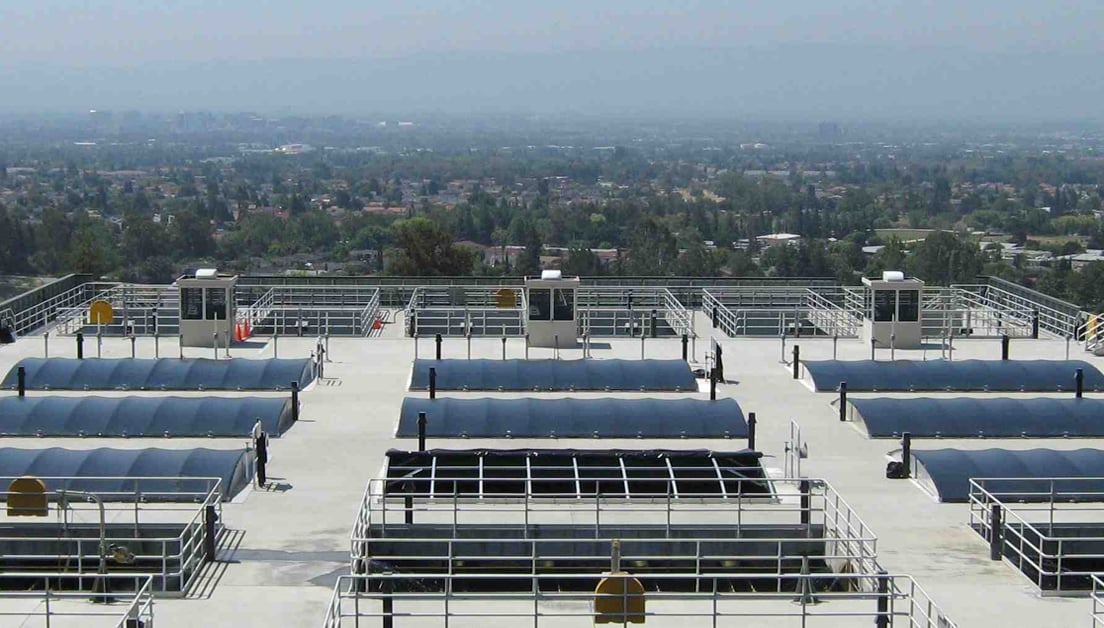The Santa Clara Valley Water District (the District) manages an integrated water resources system that includes the supply of clean, safe water, flood protection, and stewardship of streams on behalf of Santa Clara County's 1.8 million residents. The district effectively manages 10 dams and surface water reservoirs, three water treatment plants, an advanced recycled water purification center, a state-of-the-art water quality laboratory, nearly 400 acres (162 hectares) of groundwater recharge ponds, and more than 275 miles (443 km) of streams.
Challenge
The District had a vision for a “cleaner, greener, and leaner” operation. To help achieve this, its Penitencia water treatment plant was undergoing construction to replace chlorine primary disinfection with ozone. This would minimize chlorine feed at the head of the plant and reduce the formation of disinfection by-products (DBPs). However, past attempts to reduce the chlorine feed resulted in significant algae growth—a negative side effect that the plant was keen to fix.
District staff knew that algae control and DBP reduction could be accomplished in two ways: through the use of alternative oxidants to chlorine, or by creating a physical barrier to block the sunlight that algae requires to grow. Both solutions are used effectively at water treatment plants, so the District conducted a cost-analysis study to help determine the best return on its investment.
Solution
Since the cost could be recovered in about five years through hypochlorite reduction, the District ultimately chose basin covers. Research was done on three different types of basin covers, and fabric, fiberglass, and aluminum cover materials were considered. All of the cover styles would block sunlight and thus control algae, but the Penitencia plant expressed a strong preference for structurally supported covers consisting of a retractable fabric sheet tensioned over supporting aluminum arches. This cover style would be the easiest for operational staff to access and maintain basins and tube settlers.

Nine of Evoqua’s Geomembrane Technologies™ brand structurally supported covers were selected for the Penitencia plant’s tube settlers, which were especially prone to algae. The custom-designed covers included special features requested by the plant, and were designed to fit around the various pipes and light standards existing around the basin openings. The covers were installed in just four days.
" The covers were installed quickly, without disruption, while our basins were in service. "
Results
Thanks to Evoqua’s Geomembrane Technologies™ brand structurally supported covers, operators at the Penitencia water treatment plant were able to cut back chlorine feed even before the covers were completely installed. After installation, the covers helped plant operators reduce pre-chlorine feed by more than half. A small amount of chlorine is still used to provide coagulant aid and to control algae growth in uncovered portions of the treatment trains. When plant staff retracted the covers five months after installation, they found the tube settlers to be free of algae.
The Santa Clara Valley Water District is now well positioned to meet demand for a cost-efficient, reliable water supply produced in a more environmentally-sensitive manner. In the first six months after installing the covers, the plant saved $24,000 from lower hypochlorite usage compared to the year before. The District is expected to recover the cost of the cover installation and save an additional $500,000 over the lifetime of the covers.
" DBP levels are down and we are saving money through reduced chlorine feed "